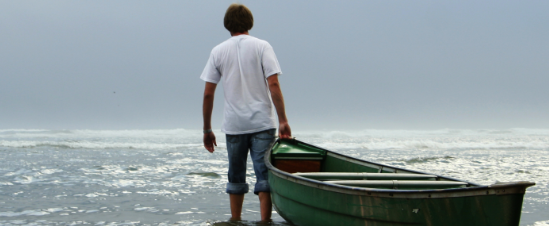Module: Why Knowledge Brokering is Key to Climate-Resilient Development

Introduction
Climate change is transforming international development. While development still rightly focuses on poverty reduction and sustainable socio-economic growth, it is becoming increasingly clear that the impacts of climate change can undermine development progress.
This module explains why effectuve knowledge brokering is essential for achieving climate resilient development, where long-term goals under climate change are also taken into account in decision-making.
Learning objectives
After watching this video, you will understand:
- how climate change can undermine development progress and why it is known as a risk multiplier;
- how decision-making can be climate-proofed and
- how climate knowledge brokers support this process.
Below the video, you will find a number of case studies of decision makers needing climate change information. We have also added links to the references mentioned at the end of the video, as well as additional documentation.
The video
Case Studies – What Types of Climate Information are Used in Development Decision-Making?
Broad categories of information and knowledge that may feature in decision making processes (adapted from Hammill & Tanner 2011)
- Process guidance: Which steps should I take? (e.g. how do I find out who is most vulnerable in my city?
- Data & information on climatic and non-climatic variables:Information about the past, present and future variables that I need to consider in my decisions (e.g. is it going to get wetter or drier in the next 20 years? If we try to relocate communities on the coast, are they likely to they comply?)
- Experiental knowledge from elsewhere:Information about how others have dealt with similar decisions (e.g. What did our neighbouring country do about the coastal erosion?
Example 1: Household decisions for resilient livelihoods
- Decision maker: Farmer
- Decision context: Increasing variability in weather patterns have disrupted his traditional farming decisions/practices.
- Time-scale: Weekly to seasonal
- Examples of Information needed: When will it rain this season, and how much? How reliable is the projection? Which crops will work best in these conditions? If I’m planting something new, how do I manage it effectively? Will I be able to sell these crops at market, and for how much? What other sources of income can I access?
- Case study:weADAPT: Key insights from a vulnerability study of four Community Forests in Cameroon
Example 2: Rapid growth in a changing climate
- Decision maker: Urban planner for a fast-growing city
- Decision context: Planning for big changes in development paths and climate trends with limited resources to address them.
- Time-scale: 2-20 years
- Examples of information needed: How will climate change affect our city infrastructure in over the next 20 years? Who and what will be most impacted, and how can I find out? What will these changes mean taking into account our current rates of growth and development? Will the infrastructure investments we are making now withstand these changes? Who has the missing data I need to answer these questions? How reliable is the data I already have?
- Case studies: weADAPT: Using climate information to support adaptation planning and policy making – a step-by-step guide / Integrating climate change into long-term strategic city development planning: the case of Cape Town
Example 3: Confronting the growing risks from climate change
- Decision maker:Coastal manager in an ocean-side state
- Decision context: Planning for future climate variability and change and sea level rise in the face of pressure to further develop coastal areas.
- Time-scale: 5-30 years
- Information needed: How will climate change and sea level rise affect our coastal regions in the next 30 years? Which areas are most vulnerable? What infrastructure investments need to be made to secure our water resources and protect existing development? Where can I access this information? How can we integrate this information? What information are we missing?
- Case study:Academia.edu: More than information: what coastal managers need to plan for climate change
Freely available resources
- Mainstreaming climate information into sector development plans: the case of Rwanda’s tea and coffee sectors.(Future Climate For Africa (FCFA), P. Watkiss, 2015)
- Climate change at the city scale: impacts, adaptation and mitigation in Cape Town.(Cartwright, A., Oelofse, G., Parnell, S., and Ward, S., 2012)
- Climate-Resilient Development: A Framework for Understanding and Addressing Climate Change (USAID)
- Mainstreaming climate compatible development: Insights from CDKN’s first seven years
Resources in academic journals
- Matching knowledge brokering strategies to environmental policy problems and settings(Michaels, S., 2009)
- Narrowing the climate information usability gap(Lemos, M.C., Kirchhoff, C.J. and Ramprasad, V., 2012)
(0) Comments
There is no content